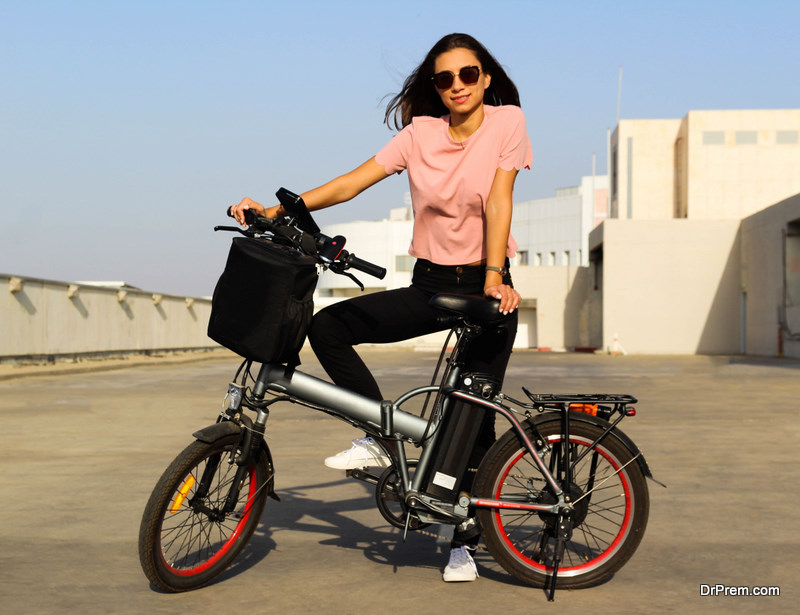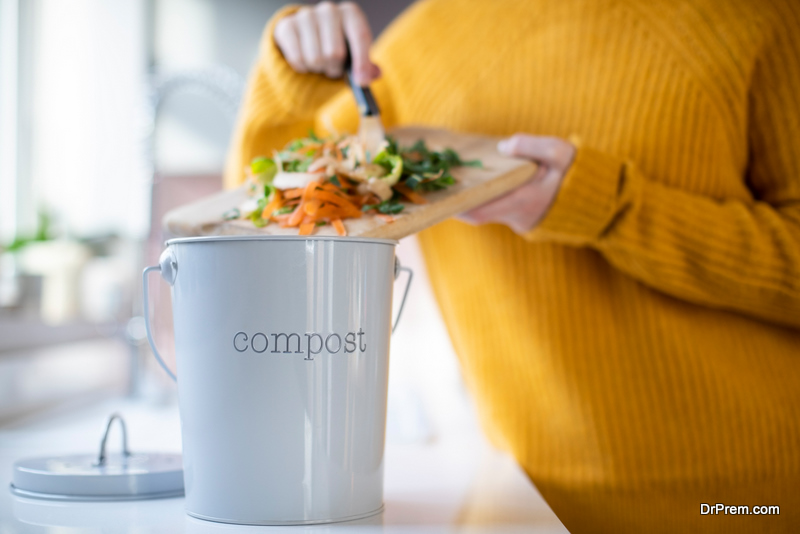Living sustainably in the modern world can be a challenge due to the widespread reliance on fossil fuels. Cutting out every negative source of environmental impact from your lifestyle may seem impossible without sacrificing your modern luxuries.
Fortunately, there are ways to cut down on your carbon footprint without giving up those comforts. Commit to a few to make the difference you want to and feel secure in doing so. Here are seven tips for living in luxury while also living sustainably.
1. Buy Clothes from High-Quality, Sustainable Brands
 When shopping, it’s rarely viable to research or even get a glimpse at every step of a brand’s supply chain. Because of this, you won’t be able to know how eco-friendly they truly are right off the bat. Luckily for earth-conscious consumers, there are plenty of brands that aim to produce apparel with transparency and environmental awareness. For example, many sustainable brands also seek to use ethically produced materials such as silk or recycled cotton.
When shopping, it’s rarely viable to research or even get a glimpse at every step of a brand’s supply chain. Because of this, you won’t be able to know how eco-friendly they truly are right off the bat. Luckily for earth-conscious consumers, there are plenty of brands that aim to produce apparel with transparency and environmental awareness. For example, many sustainable brands also seek to use ethically produced materials such as silk or recycled cotton.
To spot a sustainable brand, look into the kinds of certifications the company has. Those with one or more environmental certifications can most likely be trusted to adhere to those values. Also, the more conscious approach to production by these companies often leads to a higher-quality product. Because of this, you won’t be searching long for the luxury you’re seeking.
2. Use Eco-Friendly Lighting Solutions
When it comes to decorating your home, there are three main sources of electric light at your disposal. Plain incandescent bulbs provide a warm, old-fashioned glow, but they are also the least energy-efficient type of bulb. Fluorescent bulbs are brighter and last longer, but they contain toxic materials that can be released into the environment if broken. Light-emitting diode (or LED) lights use even less energy and are reliable to the point of becoming the industry standard.
All three types provide different color options, but LED is the most versatile in that regard.
In terms of pure energy efficiency, LEDs offer the best lifespan, brightness, and quality compared to the other options. You can purchase them in any color and design your lighting however you want with them. LEDs do tend to be more expensive up front, but long-term usage will offset both their cost and carbon footprint.
3. Embrace Second-Hand Goods
 Alongside purchasing from sustainable brands, you may need other items that can’t be found in eco-friendly versions. In this case, consider buying goods (clothing, home supplies, etc.) from secondhand sellers like thrift stores, outlets, and online marketplaces. You’ll be surprised what you can dig up — thrifted items can commonly be like-new in condition. They also come at prices that are much lower than retail, while offering similar or identical quality.
Alongside purchasing from sustainable brands, you may need other items that can’t be found in eco-friendly versions. In this case, consider buying goods (clothing, home supplies, etc.) from secondhand sellers like thrift stores, outlets, and online marketplaces. You’ll be surprised what you can dig up — thrifted items can commonly be like-new in condition. They also come at prices that are much lower than retail, while offering similar or identical quality.
When getting rid of items in your home, you can sell or donate them to thrift stores instead of throwing them out. This way, others can continue to make use of these goods after you are finished with them. Over time, you’ll be throwing out less and giving (or selling) more, only keeping what you want.
4. Purchase Locally Sourced Groceries
The supply chain for most chain grocery stores involves excessive pollution through shipping, plastic, and the use of food preservatives. You can live more sustainably by avoiding such stores and circumventing these processes as best you can. Instead of shopping at chain grocers, look for sellers that provide locally sourced products and protect the environment. The more local the food source, the less fuel is used to transport it, and the quicker it gets to you.
Not only are you lowering your impact on the environment, but you’re also consuming fewer preservatives and eating healthier foods. This practice also provides fresh produce of a quality you won’t be able to find in big chain stores.
5. Use Greener Forms of Transportation
 Even if you’re aware of how your goods are produced, chances are you need a car to go get them. This isn’t necessarily the case if you live in a city, where you can take public transportation. If you don’t, you can still do your part by walking or biking.
Even if you’re aware of how your goods are produced, chances are you need a car to go get them. This isn’t necessarily the case if you live in a city, where you can take public transportation. If you don’t, you can still do your part by walking or biking.
Should you be too far from your destination to make these options possible, an electric vehicle will significantly lower your daily carbon emissions. Several cars on the market, like the Honda Clarity and Nissan Leaf, are classified as zero-emission vehicles. This means they produce no tailpipe emissions.
More of these vehicles are being produced with the environment in mind and, like clothing, are more thoughtfully designed. If you can’t get a car but prefer not to use public transportation, a sturdy bicycle is another great option. Bicycles produce very little waste outside of their production and can keep you in great shape during your travels.
6. Use Reusable Food Containers
For a simple way to pack and store small items, reusable containers and wraps are less wasteful than plastic storage. Look for products made out of green materials — metal, recycled paper/fiber, glass, and beeswax are most eco-friendly. They’ll keep your food fresh throughout the day. Due to their rigidity, these materials also make for great organizational tools for the pantry.
This principle also applies to staying hydrated on the go. Single-use plastic bottles are ubiquitous, but with a reusable bottle, you’ll never need to use one again. Reusable bottles, particularly those made of metal, are also good at preserving the temperature of any liquid within. You can use them for years, as opposed to plastic bottles that are often used only once.
7. Get a Compost Bin

To reduce unnecessary food waste from your home, put it in a compost bin instead. According to the Environmental Protection Agency, more than 30% of what Americans throw away each year could be composted. A bin in your backyard will take that waste and convert it over time into nutrient-rich soil. You can cut your carbon emissions drastically just by putting food scraps in your compost pile and letting them decompose.
The decomposed matter can then be used as nutritious garden soil for plants and healthy grass. If you live in an apartment or don’t have a yard, you can purchase a special bin to be used indoors. Like a trash can, these bins are built to keep smells in and keep unwelcome critters out. After decomposition, the resulting soil can be used for houseplants or donated to a community garden.
Regardless of your way of life, you won’t have to lose it by trying to live sustainably. The truth is, your day-to-day experience does not need to even change that much. If you’re conscious about how you consume and travel, just a few changes can make all the difference.
Article Submitted By Community Writer




